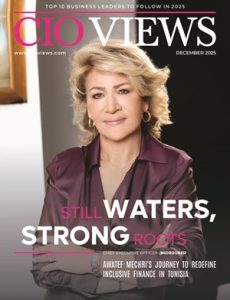As we approach 2025, the term “post-digital era” is no longer just a future concept; it is our current business reality. In this ever-changing landscape, traditional strategies are giving way to agile, data-driven, and digitally native business models that meet rapidly changing consumer expectations. Businesses that fail to adapt face obsolescence, whereas those that embrace innovation thrive.
In this article, we look at the most transformative business models driving change across industries in the post-digital era, to help you align your strategies for future relevance and profitability.
1. Platform-Based Ecosystems: Creating Value Through Integration
Platform-based models are dominating the digital economy, with Amazon, Alibaba, and Salesforce setting the standard. These platforms do more than just sell products and services; they also orchestrate ecosystems in which third-party developers, service providers, and customers collaborate to create value.
Key features:
-
Network effects that scale revenue exponentially
-
Multi-sided marketplaces enhancing reach and data intelligence
-
APIs and SDKs allowing third-party integration
These ecosystems foster stickiness and loyalty, turning users into long-term contributors to the platform’s value. In 2025, platforms are becoming more decentralized, AI-powered, and industry-specific, transforming sectors like fintech, edtech, and healthtech.
2. Subscription Economy: Predictable Revenue and Deeper Relationships
The subscription model has moved beyond Netflix and Spotify. Today, it drives businesses ranging from B2B SaaS to consumer packaged goods. In a post-digital world, recurring revenue streams are critical for stability and scalability.
Benefits include:
-
Improved customer lifetime value (CLTV)
-
Data-driven personalization and engagement
-
Lower customer acquisition costs (CAC) through long-term contracts
To stand out in 2025, subscription models must include tiered services, AI-powered recommendations, and embedded rewards. Leaders such as Adobe and Salesforce have thrived by combining subscriptions with community ecosystems and self-service innovations.
3. Freemium to Premium: Value-First Monetization
The freemium business model remains a core strategy for digital-first brands. By providing core features at no cost, companies attract large user bases and convert a percentage to premium plans with advanced features and benefits.
What’s new in 2025:
-
AI-enhanced behavioral analytics for upselling opportunities
-
Gamification mechanics to boost engagement and conversion
-
Micro-payments and modular upgrades replacing flat premium tiers
This model, effectively used by platforms like Zoom, Dropbox, and Notion, empowers businesses to build trust and value before monetization, which is essential in a saturated digital marketplace.
4. Outcome-Based Models: Shifting from Service to Results
Customers in the post-digital age are less interested in buying products or services and more focused on achieving outcomes. In response, forward-thinking companies are transitioning to outcome-based business models.
Examples include:
-
Healthcare providers charging based on patient recovery outcomes
-
Manufacturers using IoT to offer uptime guarantees
-
Consulting firms compensated by measurable KPIs
By aligning financial incentives with client success, these models build trust, accountability, and loyalty. This strategy is especially relevant for industries under disruption, such as energy, education, and logistics.
5. On-Demand Economy: Real-Time Fulfillment and Micro-Services
The on-demand model continues to thrive in 2025, reshaping consumer behavior with expectations of instant gratification. Whether it’s food, transport, cloud services, or freelance labor, businesses are optimizing for speed, convenience, and flexibility.
Enablers include:
-
AI-powered logistics and dynamic resource allocation
-
Blockchain for smart contracts and payments
-
Hyperlocal service hubs reducing delivery timelines
Gig platforms like Uber, Swiggy, and Fiverr have normalized this model, and now even enterprise services are available “on tap,” setting a new standard for real-time fulfillment across all sectors.
6. Decentralized Autonomous Organizations (DAOs): The Future of Governance
DAOs represent a paradigm shift in how organizations are structured and governed. Built on blockchain technology, these entities operate through smart contracts, removing the need for centralized control.
Key characteristics:
-
Transparent, democratic decision-making
-
Token-based incentive structures
-
Community ownership and governance
In 2025, DAOs are not just for crypto communities—they are entering real estate, gaming, publishing, and even venture capital. As decentralization becomes mainstream, expect DAOs to challenge traditional hierarchies with more agile and equitable models.
7. Digital Twins and Virtual-First Business Models
Emerging from Industry 4.0, digital twins are virtual replicas of physical systems used to simulate, analyze, and optimize operations in real time. In 2025, entire business models are built on virtual-first infrastructure.
Industries leveraging digital twins:
-
Manufacturing – Predictive maintenance, reduced downtime
-
Urban planning – Smart cities and infrastructure modeling
-
Retail and fashion – Virtual try-ons and inventory management
Coupled with metaverse integration, digital twin technologies are pushing businesses toward simulation-based decision-making, reducing costs and improving responsiveness.
8. Circular and Regenerative Business Models: Sustainability-Driven Growth
Sustainability is no longer a marketing add-on—it is a core business driver. Circular economy models, which prioritize reuse, recycling, and zero waste, are gaining rapid traction among both consumers and regulators.
Post-digital applications:
-
Product-as-a-Service (PaaS) – Brands like IKEA and HP offer leasing models
-
Buy-back schemes and refurbished markets
-
AI for supply chain transparency and lifecycle analysis
Companies that integrate regenerative design principles are not only attracting environmentally conscious consumers but also creating cost-saving efficiencies, risk resilience, and long-term brand equity.
9. AI-Powered Hyper-Personalization Models
In 2025, AI is the cornerstone of delivering personalized experiences at scale. Businesses are leveraging deep learning, NLP, and predictive analytics to tailor offerings to individual needs in real time.
AI-powered personalization includes:
-
Dynamic pricing models that adjust per customer behavior
-
Contextual content delivery across platforms and touchpoints
-
Smart product recommendations boosting conversions and retention
These models are redefining customer experience benchmarks. From e-commerce to financial services, hyper-personalization is the new competitive edge.
10. Hybrid Commerce Models: Bridging Physical and Digital
Consumers now expect seamless integration between online and offline experiences. In 2025, hybrid models—blending e-commerce, physical stores, mobile apps, and AR/VR—are defining modern retail.
Examples include:
-
Click-and-collect fulfillment strategies
-
Augmented Reality try-before-you-buy
-
In-store analytics informing digital campaigns
Brands like Nike, Apple, and Sephora are leading the charge with phygital experiences that unify brand presence across all customer touchpoints, enhancing both engagement and revenue.
Accepting Change to Remain Competitive
The post-digital era of 2025 requires more than just technology; it also necessitates business model innovation, customer centricity, and strategic agility. Companies that evolve continuously, adopting flexible frameworks that combine physical, digital, and virtual elements to create holistic value, will succeed.





